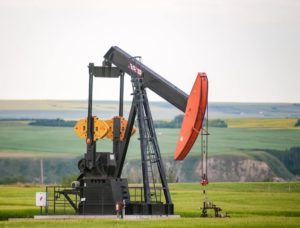Oil Heating with Inline Heaters
Last updated on April 28th, 2022 at 05:37 pm
 Inline heaters use indirect heating to maintain flow, regulate, and control the temperature of the heated medium. They are commonly used in steam generation and preheating, as well as processing water.
Inline heaters use indirect heating to maintain flow, regulate, and control the temperature of the heated medium. They are commonly used in steam generation and preheating, as well as processing water.
The indirect heating method makes inline heaters particularly useful for heating hazardous liquids like waste oil. Because they do not come directly into contact with the target medium, they minimize potential corrosion damage.
In this article, we explore the use of electric inline heaters for oil heating applications.
Oil Heating Applications
Preheat Heavy Oils
Heavy oils have essential uses in industrial processes. For example, in coal power plants, burning heavy fuel oils help to get operations going. However, trying to “cold start” with heavy oils can mean long wait times and inefficient processes.
To this end, inline heaters preheat heavy fuel oils for applications like pumping and burning.
Temperature Maintenance
Heavy fuel oils are only one spectrum of the capabilities of inline heaters. In addition to preheating, these electric heaters offer a temperature maintenance solution for light- and medium-weight oils.
Their indirect heating keeps them safe from damage from potentially corrosive mediums. At the same time, the electric heater can still deliver enough heat to achieve and maintain temperature for light and medium oils. All while remaining efficient and reliable.
Flow Rate
Another important use of inline heaters for oil heating is flow rate control. Flow rate manages the viscosity of the medium. This affects the final product, its transportation, and can aid in freeze prevention.
Maintaining the proper flow rate is essential and relies on the heater, digital control panel, and monitoring equipment working in sync. As such, it is ideal to purchase the controller and heater from the same manufacturer.
Designing an Inline Heater for Oil Heating
Each project has its own specific requirements for heater design. Here we explore a few key considerations when choosing the best heater for an oil heating application.
Heater Type
 As listed above, inline heaters are especially useful for preheating heavy oils, temperature maintenance, and managing flow rate. But, some situations may benefit more from an immersion heater.
As listed above, inline heaters are especially useful for preheating heavy oils, temperature maintenance, and managing flow rate. But, some situations may benefit more from an immersion heater.
Immersion heaters use direct heating, which is more efficient. Flanged heaters are frequently used for oil applications and are known for their capability and reliability. So long as the available sheath and flange materials can withstand the temperature and corrosion of the oil, an inline heater may not be necessary.
Materials
Because they do not directly contact the oils, inline heaters can generally use less expensive materials. The sheat is typically steel for low, medium, and even heavy oils. Depending on the purpose and temperature, the flange can be steel or stainless steel.
Preheating for pumping heavy fuel oils starts at 15.5℃ (60℉). Preheating for burning starts at 74℃ (165℉).
Mounting
Electric heaters are smaller than combustion heaters, despite their powerful capabilities. This gives them a lot of variation in their mounting. As a result, they can be placed to allow other operations to occur in their tanks.
Typically, inline heaters use either horizontal or vertical mounting for oil heating applications.
Process Controls
In addition to the heater itself, it is important to consider the controls and monitoring equipment to be included. The digital controller allows for automated controls. At the same time, equipment like thermocouple probes and thermostats help to improve safety and accuracy.
Inline Oil Heater Quotes
Wattco custom manufactures inline heaters for oil heating, steam generation, and water processing. Our team of engineers works with you and your budget to assess the best heater type, materials, mounting, and components to meet the needs of your specific project.
Contact Wattco today for electric inline heater quotes and information.
